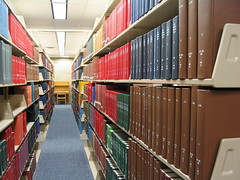[Professorial Lecture series post three]
The Association for College and Research Libraries (ACRL) defines scholarly communications as:
“the system through which research and other scholarly writings are created, evaluated for quality, disseminated to the scholarly community, and preserved for future use. The system includes both formal means of communication, such as publication in peer-reviewed journals, and informal channels, such as electronic listservs.”
Without a doubt, scholarly communication is a cornerstone of academia. Yet there is no one-size-fits-all definition for scholarly communication due to differences in the various disciplines.
Traditionally, scholarly communication in librarianship has involved the use of mediums such as books, journals, and formal presentations. As librarian-scholars, we recognize and continue to place importance on peer-reviewed publications primary formal was to disseminate of new knowledge. Such publications provide a dated snapshot of the authors’ thoughts at that moment in time and becomes a part of a more permanent scholarly record.
Yet, the past decade has created new dilemmas for our profession as evidenced by the emergence of new ideas about the practice of scholarly communications, issues around the crisis in journal publishing and the challenges within the peer-review system. As a disciple we have embraced open access policies and retaining rights to our scholarship. The change in scholarly communication that we have been witnessing has been facilitated by the digital technology evolution.
The Internet has expanded the range of possibilities for scholarly discourse by changing both the means of distributing ideas and the process of evaluating scholarship. The network has lead to the development of new tools which facilitate interaction between authors, readers, or between authors and readers.
As a member of faculty of The Ohio State University Libraries I am pleased to say that we have been at the forefront of these changes, advocating for alternative forms of scholarly communications in librarianship. Yet, deciding which tools and work best to communicate and scholarship in the discipline of librarianship has not been a simple transition. How we have evolved and adapted our scholarly communication has in part been documented by the various dilemmas face throughout my career at Ohio State.
[Next: A Gopher on the Reference Desk]
